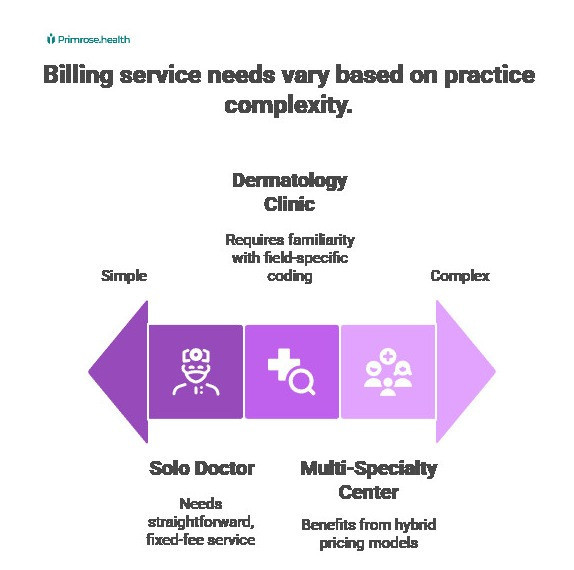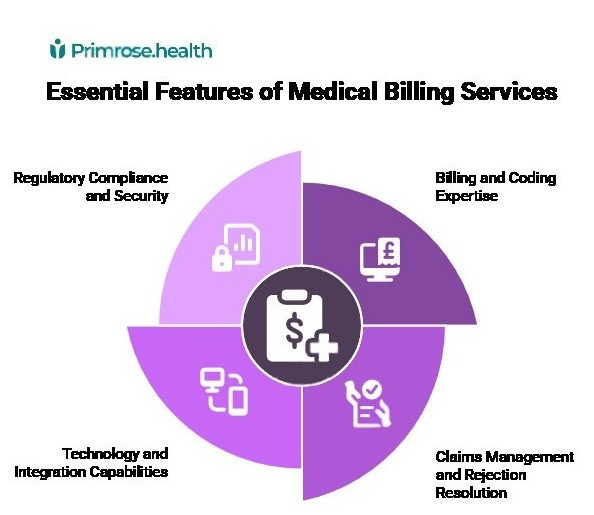views
How to Choose the Right Medical Billing Service for Your Small Practice
Finding the right medical billing service can be a game changer for your small practice. It’s not just about cutting costs; it’s about improving your cash flow, cutting down errors, and making your day-to-day operations smoother. A good billing partner can help you collect what’s owed faster, stay compliant with regulations, and free up your staff to focus on patient care. But with so many options out there, how do you pick the best one for your specific needs?
Understanding what your practice needs most is the first step. Once you're clear on that, you can find a partner with the right features, reputation, and support. Planning the switch carefully will make the process easier. Let’s take a closer look at how to choose a medical billing service that’s a perfect fit.
Understanding Your Practice’s Specific Needs
Assessing Your Practice’s Size and Revenue Volume
Your practice’s size and income tell you what kind of billing service works best. A solo doctor’s clinic has different needs compared to a busy multi-specialty center. Smaller practices might need a straightforward service with fixed fees, while larger ones may benefit from hybrid pricing models that adjust with revenue. Matching your billing needs with the service’s capacity saves money and time.
Identifying Your Practice’s Specialty and Billing Complexity
The types of services you offer matter. A dermatology clinic bills differently from an orthopedic practice. Some specialties have unique coding rules or documentation requirements. Choose a billing company familiar with your field to avoid errors that can delay payment or cause compliance issues. Experience counts, especially in specialized areas.
Evaluating Current Pain Points and Goals
Start with a billing audit. Look for trends like frequent denials, slow reimbursements, or high rejection rates. Setting clear goals—like reducing claim rejections or speeding up payments—will help you find a partner that aligns with your priorities. Knowing your pain points makes it easier to choose a service that can fix them.

Key Features and Capabilities to Look for in a Medical Billing Service
Billing and Coding Expertise
Accuracy in coding is vital. The best medical billing services stay current with CPT, ICD-10, and HCPCS codes. Correct coding means fewer denied claims and higher revenue. Ask potential vendors about their training and expertise to ensure they can handle your billing with precision.
Claims Management and Rejection Resolution
A good service manages your claims from submission to payment. They track rejections carefully and fix issues quickly. Services that follow-up on rejected claims and resubmit without delay help maximize your reimbursements and keep cash flowing.
Technology and Integration Capabilities
Your billing system should work well with your existing software. Compatibility with your electronic health record (EHR) makes data transfer easy. Features like patient portals, online payments, and real-time reports give you more control and transparency in your practice’s financial health.
Regulatory Compliance and SecurityHIPAA compliance isn’t optional. Your billing partner must follow privacy rules and protect patient data. Look for vendors with secure payment systems, audit trails, and data encryption. A compliant, secure system safeguards your practice and patients alike.

Evaluating Vendor Reputation, Support, and Pricing
Checking References and Reviewing Client Testimonials
Ask other practices about their experiences. Reading reviews or talking to current clients gives insight into a vendor’s performance. Look for consistency, transparency, and good customer service.
Assessing Customer Support and Training Services
Support can make or break your experience. Responsive help desks, dedicated account managers, and ongoing staff training ensure you maximize your chosen service. Good support helps resolve issues before they turn into revenue losses.
Understanding Pricing Structures and Contract Terms
Pricing varies—flat rates, percentage of collections, or hybrid models are common. Watch out for hidden fees or long-term contracts that don’t offer quick exit options. Clear, straightforward pricing helps you budget and compare options easier.
Ensuring Compatibility and Ease of Transition
Compatibility with Your Practice Management System
Your new billing software should integrate smoothly with your existing practice management tools. Compatibility prevents data errors and minimizes downtime during switching.
Planning the Transition Process
A smooth transition requires planning. Set clear steps, from data migration to staff training. Communicate with your team and the vendor to minimize disruptions. The goal is a seamless switch, not a chaotic upheaval.
Setting KPIs and Monitoring Success
Track your progress with key indicators like claim rejection rates, accounts receivable days, and collection rates. Regular reviews ensure your billing partner remains effective. Adjust your approach as needed to keep cash flow healthy.
Conclusion
Choosing the Best Medical Billing Services makes a big difference in your practice’s success. Take time to assess your specific needs, review features carefully, check reputation, and plan your transition thoroughly. A good partner doesn’t just generate revenue; it also supports your compliance and frees up your staff to do what they do best—care for patients. Regularly revisit your choice, as your practice and the industry change. Make informed decisions today, and watch your practice grow stronger tomorrow.










